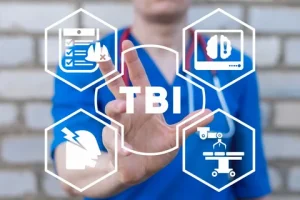
The Root Cause Revolution: How Functional Medicine Rewrites the Story of Autoimmune Disease
For decades, millions of people have lived under the weight of autoimmune diseases—conditions where the body turns against itself.

The human brain is one of the most extraordinary organs in existence—capable of adapting, learning, and healing itself in ways that science is only beginning to understand. After a traumatic brain injury (TBI), many patients and their families believe recovery depends only on medical treatment or time. But as Dr. John W. Jung, MS, DC, FIAMA, FACMUAP reveals in his book Alternative Treatments to TBI: What Should You Do for Brain Injury Recovery Immediately?, the real miracle lies within the brain’s own ability to reconnect and rewire itself through simple, deliberate exercises that anyone can perform at home. Dr. Jung, a chiropractic physician specializing in alternative medicine and neurological rehabilitation, has spent his career studying how the brain communicates with the body—and how this communication can be reignited after injury. His research and clinical practice prove that healing doesn’t always require expensive equipment or invasive procedures. Instead, it requires understanding how the brain and body interact and applying targeted stimulation to awaken those pathways again. The beauty of his approach is that it allows patients to take control of their recovery through natural, sensory-based exercises that rebuild lost connections step by step.
At the heart of Dr. Jung’s philosophy is one fascinating insight: the frontal lobe processes information from the opposite cerebellum ninety-five percent of the time. This means the right side of the brain controls much of the left side of the body, and vice versa. When an injury affects one hemisphere, stimulating the opposite side of the body can activate healing in the damaged region. This cross-communication between the brain and body forms the foundation for his method of neuro-rehabilitation—one that anyone can begin from the comfort of home. To rewire the brain, Dr. Jung emphasizes the importance of sensory stimulation, because every sense—sight, sound, smell, and touch—acts as a signal to the nervous system. When the brain receives these signals repeatedly and rhythmically, it starts to rebuild neural circuits that may have been weakened or damaged. For example, directing gentle flashes of light to one side of the field of vision, or asking the eyes to track movement in a specific direction, helps strengthen the visual and motor coordination centers of the brain. Even something as simple as following a maze with the eyes, while keeping the head steady, teaches the brain to focus, organize, and respond.
Sound also plays a crucial role. The brain processes music and tone through both hemispheres, but in unique ways. Dr. Jung points out that playing music into the right ear activates the left temporal lobe, the part of the brain that processes language, logic, and order. On the other hand, music in the left ear stimulates the right temporal lobe, which governs emotion, creativity, and spatial awareness. By alternating between the two, patients can restore balance between hemispheres. He often recommends specific types of music—soothing, rhythmic, and positive—to reduce overstimulation while maintaining engagement. The sense of smell, too, becomes a healing instrument. Dr. Jung explains that pleasant smells introduced through the left nostril engage the left hemisphere, while stronger or less pleasant smells through the right nostril activate the right. This discovery may seem unconventional, but it is rooted in neurological science: the olfactory system connects directly to the brain’s emotional and memory centers, making it one of the most powerful ways to trigger neuroplasticity. A few minutes of scent stimulation each day—alternating between lavender, citrus, peppermint, or even herbal aromas—can help reawaken dormant pathways.
Touch and movement complete this sensory network. Gentle, repetitive actions like tapping the hand or foot on the weaker side, turning the head toward light, or using gentle vibration near the ear or jawline stimulate balance and coordination centers deep within the brainstem. These are not random actions; they are precisely targeted to encourage neuro-muscular feedback, the process by which movement informs the brain and the brain refines movement in response. In Dr. Jung’s method, movement becomes both the message and the medicine. What makes these exercises truly powerful is their accessibility. They do not require specialized facilities or medical equipment—only awareness, consistency, and patience. Families and caregivers can assist by setting up simple routines that incorporate light, sound, and movement therapy into daily life. For instance, one might begin the morning with a short period of light tracking, followed by listening to calming music in alternating ears, and ending the day with scent stimulation or gentle vibration therapy. Over time, these small efforts create significant results, because the brain thrives on repetition and structured input. Dr. Jung reminds readers that the goal is not perfection but progress. Each exercise, no matter how small, reinforces the brain’s ability to learn again. When the eyes follow a line or the hand responds to a sound, new neurons begin to fire, reconnecting regions that were once silent. As he writes in his book, understanding how the frontal lobe and cerebellum communicate “opens up a world of non-invasive treatment options for brain recovery.” It’s a philosophy grounded not in miracle cures but in the body’s inherent capacity for adaptation.

For decades, millions of people have lived under the weight of autoimmune diseases—conditions where the body turns against itself.

The human brain is one of the most extraordinary organs in existence—capable of adapting, learning, and healing itself in ways that science is only beginning to understand.
Sign up for Dr. John W. Jung’s newsletter and receive exclusive content on brain injury recovery, alternative treatments, and cutting-edge research. By subscribing, you’ll get expert tips on improving brain health, updates on new therapies and research findings, special offers, upcoming events, and exclusive excerpts and bonus content from Dr. Jung’s work.
Don’t miss out—join our community today!